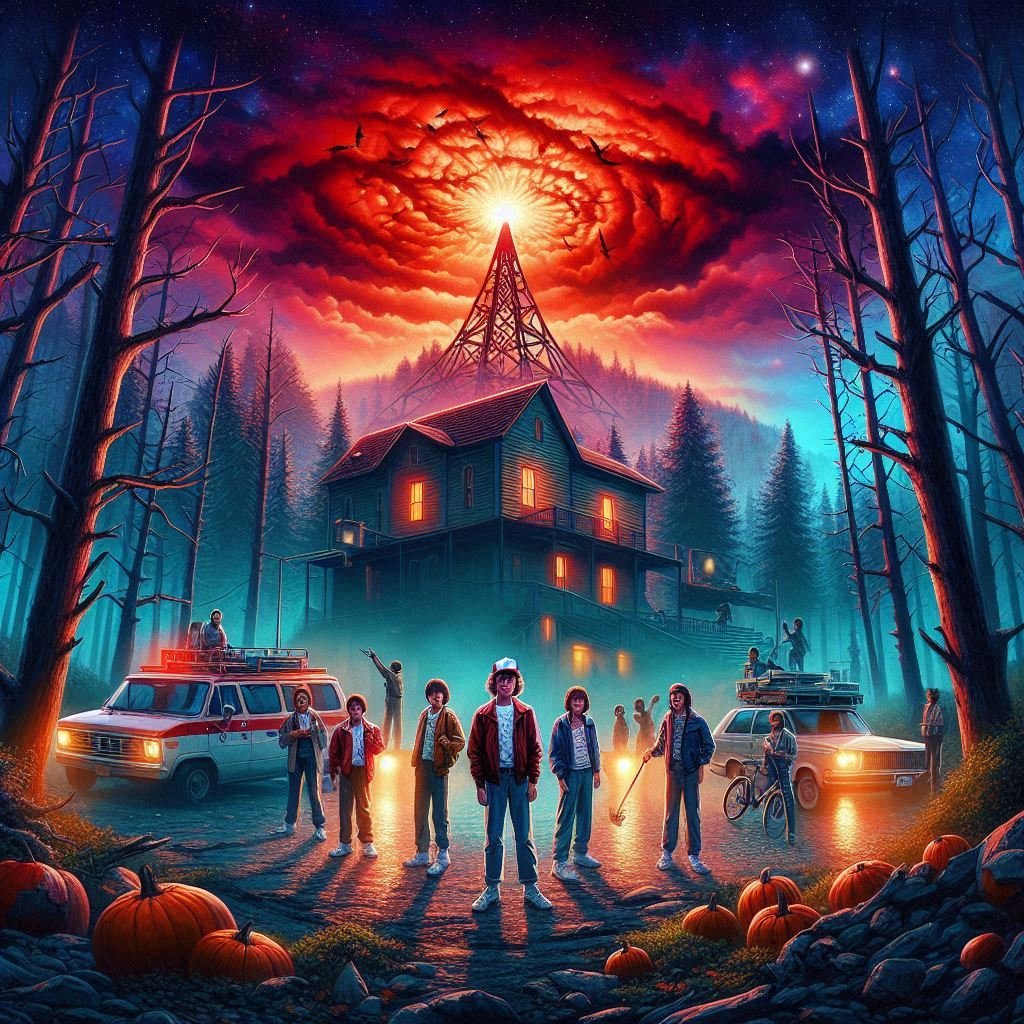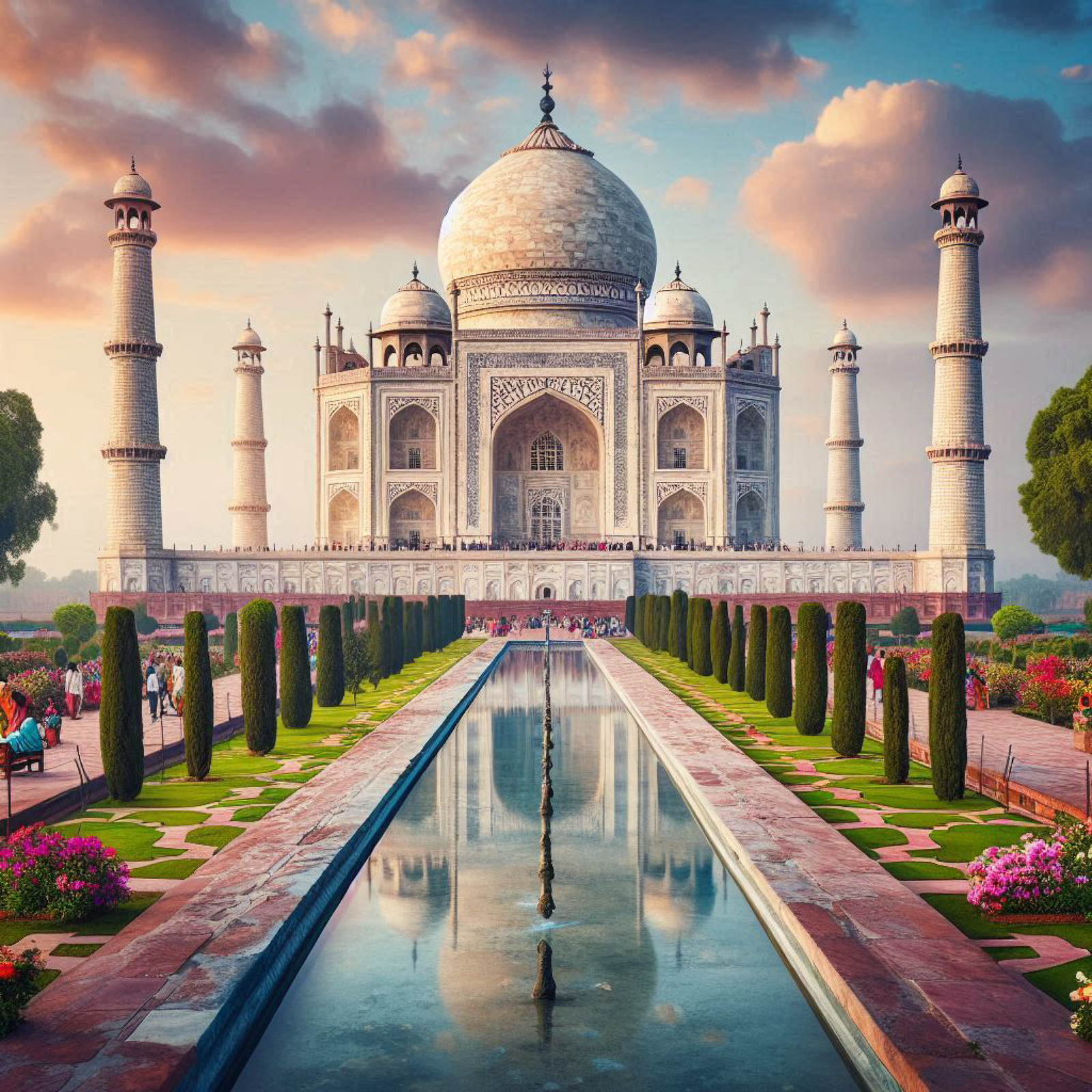
The Taj Mahal is one of the Top 10 most famous buildings in the world, known for its stunning beauty and rich history. It is located in Agra, India, and was built by the Mughal Emperor Shah Jahan. Here are 10 amazing facts about this wonder of the world!
1. Taj Mahal Built as a Symbol of Love 
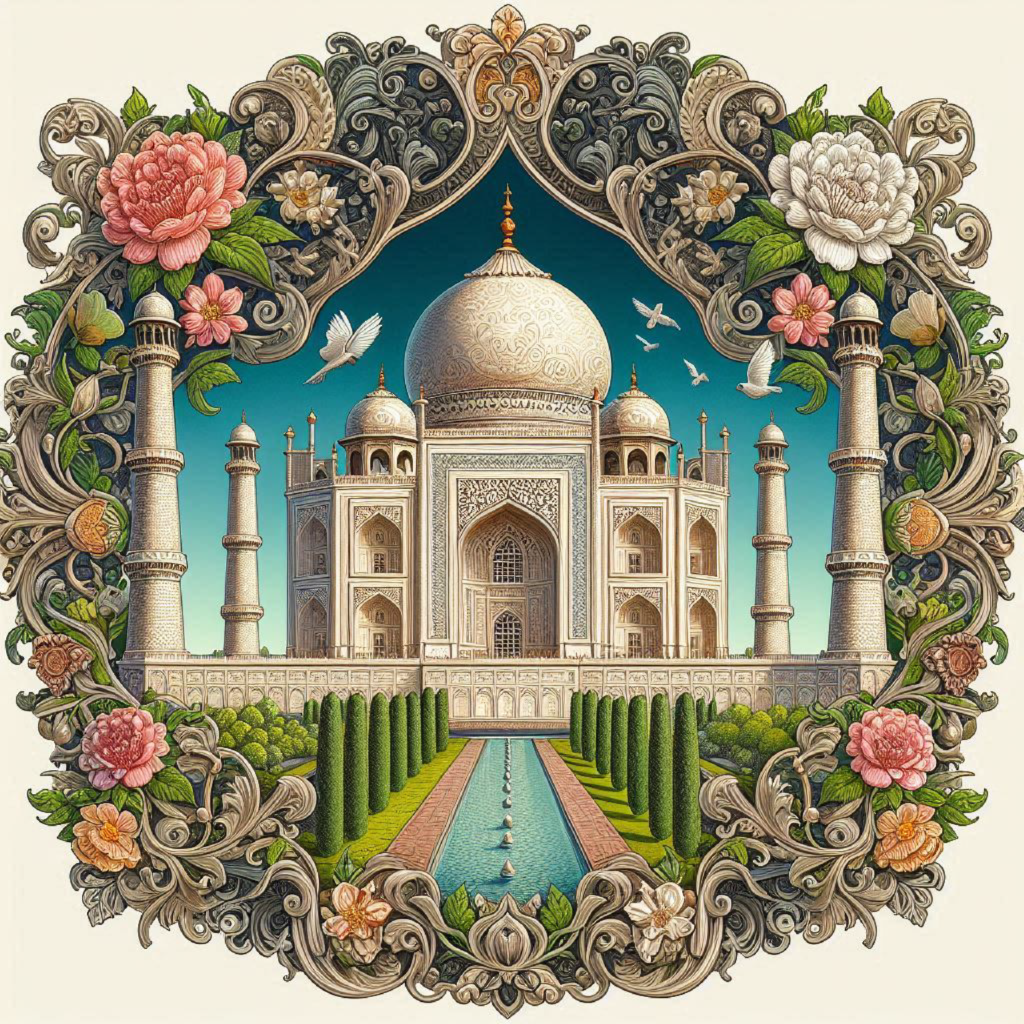
2. Made of White Marble 
The entire Mahal is made from beautiful white marble, brought from different parts of India. The marble sparkles and changes with the light throughout the day.

3. Changing Colors During the Day 
Did you know the Taj changes color? It looks pink in the morning, white in the afternoon, and golden at night as the moon rises.
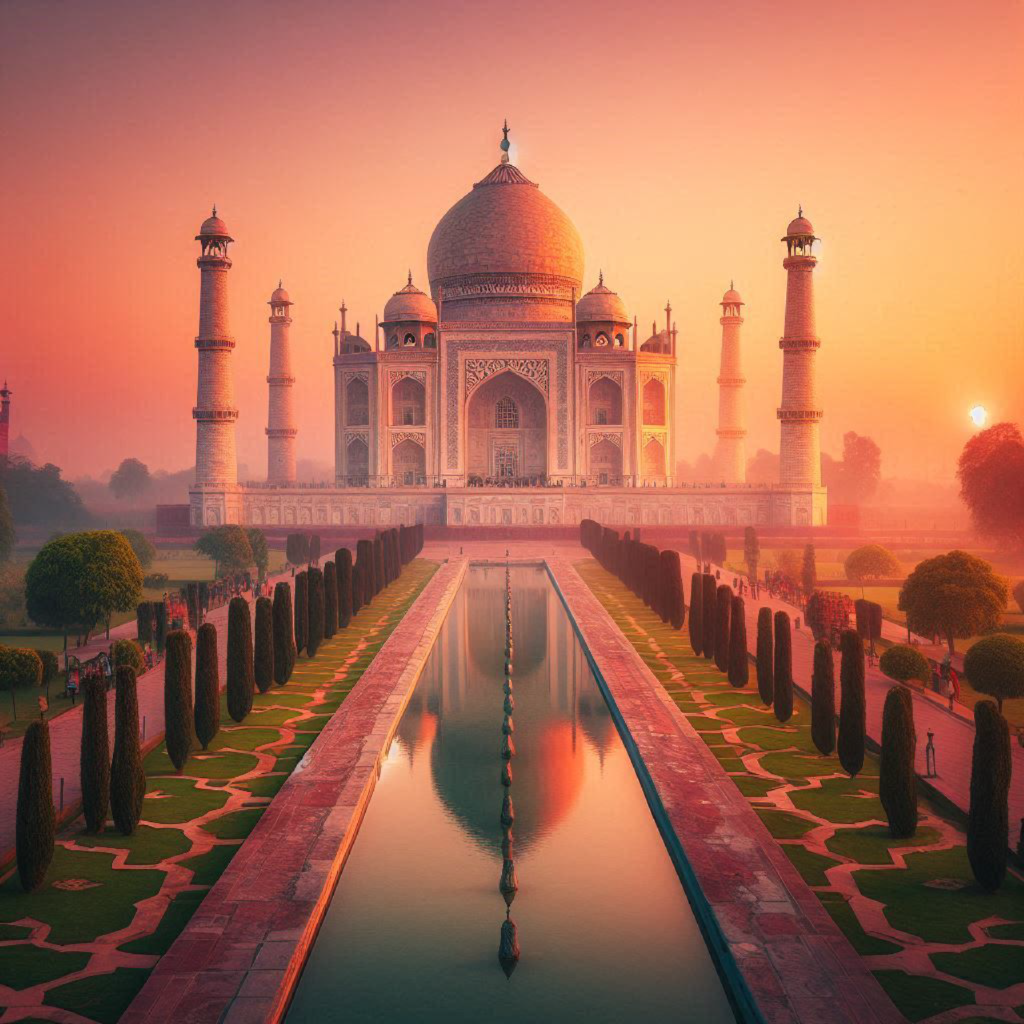
4. A World Heritage Site 
In 1983, it was declared a UNESCO World Heritage Site. It’s one of the most beautiful architectural achievements in history.

5. It Has Beautiful Gardens 
It is surrounded by a beautiful Mughal garden. It’s designed with fountains, trees, and walkways that create a peaceful atmosphere.

6. Built by Thousands of Workers 
Over 20,000 workers, artisans, and craftsmen from India, Persia, and the Ottoman Empire worked to build this magnificent monument.

7. It’s an Architectural Masterpiece 
The Taj Mahal blends Persian, Indian, and Islamic architecture. Its symmetry, tall minarets, and central dome are admired by architects around the world.
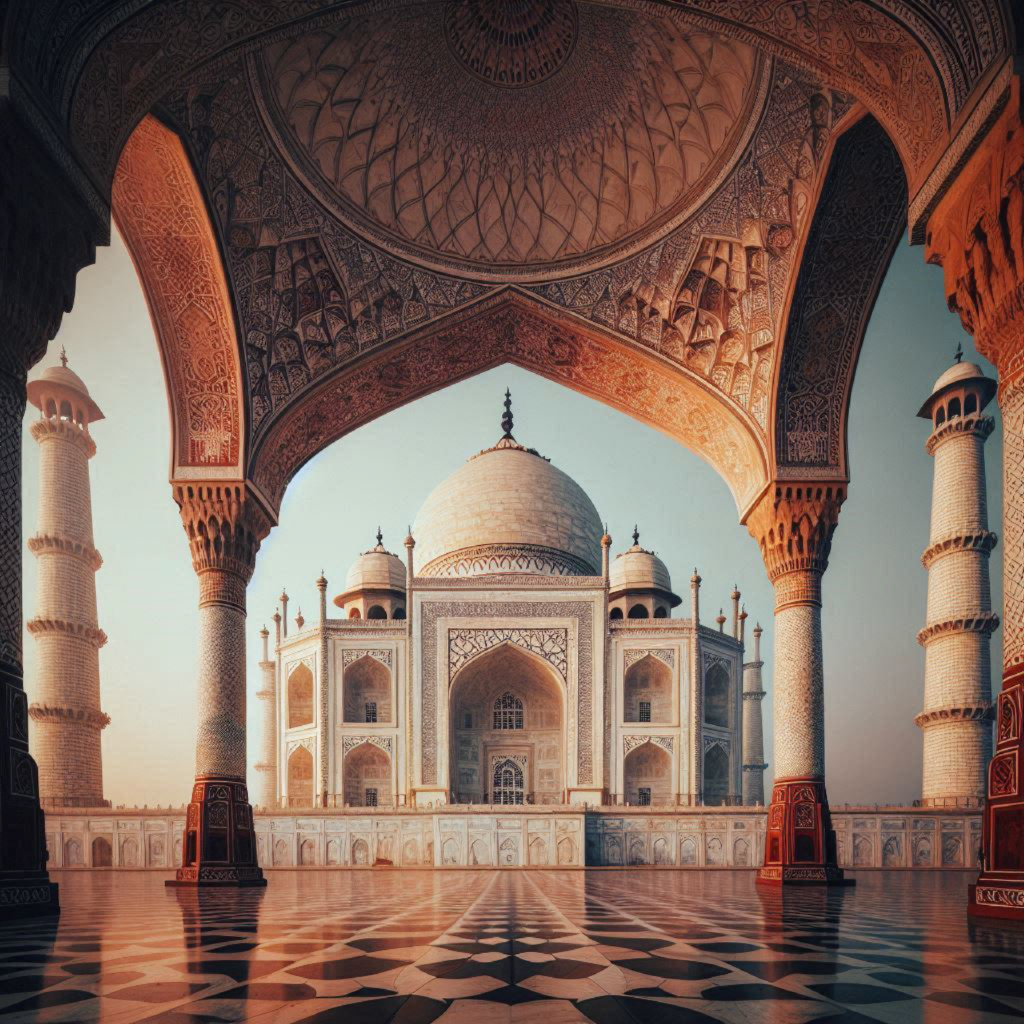
8. A Unique Optical Illusion 
From a distance, the Taj Mahal’s minarets look straight, but they are slightly tilted outward to protect the structure in case of an earthquake.

9. The Taj Mahal’s Calligraphy 
The Taj Mahal features beautiful Quranic verses carved into the marble. The calligraphy is designed to look the same size from top to bottom.

10. Attracts Millions of Visitors
Over 7 million people visit this place every year, making it one of the most popular tourist spots in India.

Some Hidden Secrets and Fun Facts:
- The Black Taj Myth: It’s rumored that Shah Jahan planned to build a black marble Taj across the river.
- Optical Illusions: It appears to change in size depending on your perspective.
- Tilted Minarets: The minarets lean outward for earthquake protection.
- Color-Changing Marble: The Taj changes color with the time of day and glows at night.
- Secret Rooms and Passages: Some believe there are hidden chambers and passages beneath the Taj.
- Mystery of Construction: How they transported the huge marble blocks is still a mystery.
- Echoing Dome: The acoustics of the dome amplify sounds, creating an echo.
- Precious Stone Art: Beautiful inlaid floral patterns are made from precious stones.
A Symbol of Love and Loss 
It’s not just a building—it’s a symbol of Shah Jahan’s eternal love for Mumtaz Mahal.
Have you visited this place yet? If not, it’s a must-see for your bucket list! Thanks for taking the time to learn about this incredible masterpiece
FAQs
It is a white marble mausoleum located in Agra, India, built by Mughal Emperor Shah Jahan in memory of his wife, Mumtaz Mahal. It is a UNESCO World Heritage Site and one of the New Seven Wonders of the World.
It was constructed as a tribute to Mumtaz Mahal, Shah Jahan’s beloved wife, who died during childbirth. It symbolizes eternal love and devotion.
The construction of the Taj Mahal began in 1632 and took about 22 years to complete, finishing around 1653.
It was designed by Ustad Ahmad Lahori, the emperor’s court architect, and involved a large team of skilled artisans and craftsmen from various regions.
The primary material used is white marble, sourced from Makrana, Rajasthan. The marble is inlaid with semi-precious stones, such as jade, turquoise, and lapis lazuli, to create intricate designs.
The gardens are designed in a symmetrical layout, representing paradise as described in the Quran. They feature water channels, fountains, and pathways, symbolizing the rivers of paradise.
The Taj appears to change colors throughout the day, looking pinkish in the morning, milky white in the evening, and golden at night. This effect is due to the marble’s reflective properties and the changing light conditions.
The walls of the Mahal feature beautiful calligraphy, primarily verses from the Quran, designed to enhance the spiritual ambiance of the monument.
Yes, It is open to visitors year-round, with ticket options available for entry. However, visiting hours may vary, and it's recommended to check for any restrictions or guidelines before planning a visit.
It is regarded as a masterpiece of Mughal architecture, blending elements from Persian, Islamic, and Indian architectural styles. Its historical significance, artistic beauty, and symbolism of love contribute to its status as a cultural icon.








